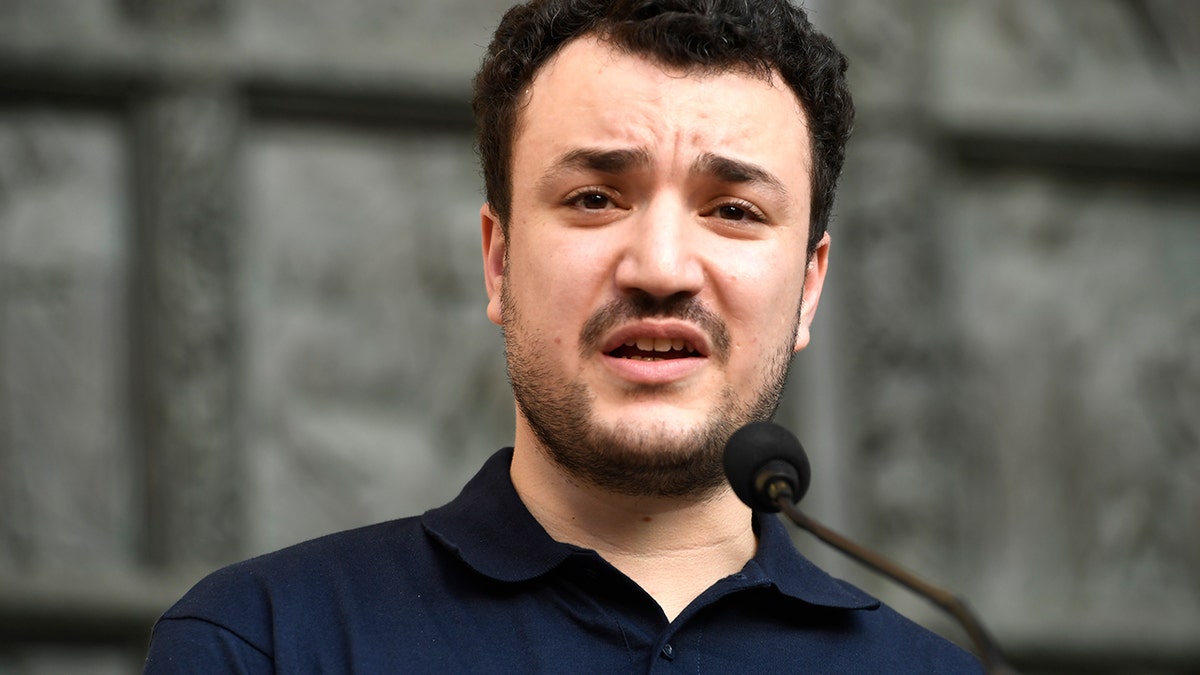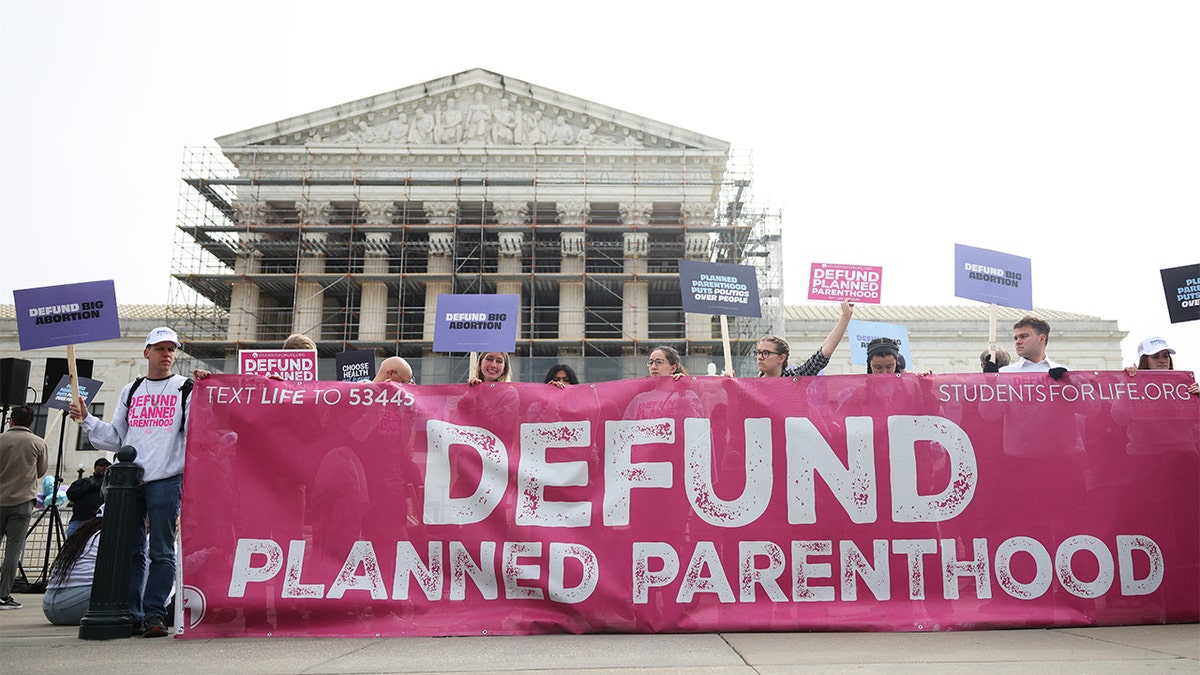How California draws congressional districts, and why it might change in a proxy war with Trump

The potential redrawing of California’s congressional district lines could upend the balance of power in Washington, D.C., in next year’s midterm congressional election. The unusual and unexpected redistricting may take place in coming months because of sparring among President Trump, Texas Gov. Greg Abbott and California Gov. Gavin Newsom.
Redrawing these maps — known as redistricting — is an esoteric practice that many voters tune out, but one that has an outsized impact on political power and policy in the United States.
Here is a breakdown about why a process that typically occurs once every decade is currently receiving so much attention — and the potential ramifications.
What is redistricting?
There are 435 members of the U.S. House of Representatives, each of whom is supposed to represent roughly the same number of constituents. Every decade, after the U.S. Census counts the population across the nation, the allocation of congressional representatives for each state can change. For example, after the 2020 census, California’s share of congressional districts was reduced by one for the first time in state history.
After the decennial census, states redraw district lines for congressional and legislative districts based on population shifts, protections for minority voters required by the federal Voting Rights Act and other factors. For much of the nation’s history, such maps were created by state legislators and moneyed interests in smoke-filled backrooms.
Many districts were grossly gerrymandered — contorted — to benefit political parties and incumbents, such as California’s infamous “Ribbon of Shame,” a congressional district that stretched in a reed-thin line 200 miles along the California coast from Oxnard to the Monterey County line.
But in recent decades, political-reform organizations and some elected officials, notably former California Gov. Arnold Schwarzenegger, called for independent drawing of district lines. In 2010, the state’s voters overwhelmingly approved a ballot measure requiring California congressional maps to be drawn by a bipartisan commission, which it did in 2011 and 2021.
Why are we talking about this?
President Trump recently urged Texas lawmakers to redraw its congressional districts to increase the number of GOP members of the House in next year’s midterm election. Congress is closely divided, and the party that does not control the White House traditionally loses seats in the body two years after the presidential election.
Trump has been able to enact his agenda — from deporting undocumented immigrants to extending tax breaks that largely benefit the wealthy to closing some Planned Parenthood clinics — because the GOP controls the White House, the Senate and the House. But if Democrats flip Congress, Trump’s agenda will likely be stymied and he faces the prospect of being a lame duck during his last two years in office.

California Gov. Gavin Newsom, shown with Democratic lawmakers from Texas, speaks during a news conference in Sacramento on Friday.
(Justin Sullivan / Getty Images)
What is Texas doing?
Texas Gov. Greg Abbott called his state’s Legislature into special session last week to discuss the disastrous floods that killed more than 130 people as well as redistricting before the 2026 election.
Trump and his administration urged Abbott to redraw his state’s congressional lines with the hope of picking up five seats.
Abbott has said that his decision to include redistricting in the special session was prompted by a court decision last year that said the state no longer has to draw “coalition districts” that are made up of multiple minority communities. New district lines would give Texans greater opportunity to vote for politicians who best represent them, the governor said in interviews.
Democrats in the Lone Star state’s Legislature met with Newsom in Sacramento on Friday to discuss the ramifications of mid-decade redistricting and accused Trump of trying to rig next year’s midterm election to hold onto power.
Republicans “play by a different set of rules and we could sit back and act as if we have some moral authority and watch this 249-, 250-year-old experiment be washed away,” Newsom said of the nation’s history. “We are not going to allow that to happen.”
Democratic lawmakers in Texas have previously fled the state to not allow the Legislature to have a quorum, such as in 2021 during a battle over voting rights. But with the deadly flooding, this is an unlikely prospect this year.
Why is California in the mix?
The Golden State’s congressional districts are drawn by an independent commission focused on logical geography, shared interests, representation for minority communities and other facets.
If the state reverts to partisan map drawing, redistricting experts on both sides of the aisle agree that several GOP incumbents in the 52-member delegation would be vulnerable, either because of more Democratic voters being placed in their districts, or being forced into face-offs with fellow Republican members of Congress. There are currently nine Republican members of the delegation, a number that could shrink to three or four, according to political statisticians.
Strange bedfellows
These dizzying developments have created agreement among rivals while dividing former allies.
Sara Sadhwani, a member of the 2021 redistricting commission and longtime supporter of independent map drawing, said she supports Democratic efforts to change California’s congressional districts before the midterm election.
“I stand by the work of the commission of course. We drew fair and competitive maps that fully abided by federal laws around the Voting Rights Act to ensure communities of color have an equal opportunity at the ballot box,” said Sadhwani, a politics professor at Pomona College. “That being said, especially when it comes to Congress, most certainly California playing fair puts Democrats at a disadvantage nationally.”
She said the best policy would be for all 50 states to embrace independent redistricting. But in the meantime, she supports Democratic efforts in California to temporarily redraw the districts given the stakes.
“I think it’s patriotic to fight against what appears to be our democracy falling into what appears to be authoritarian rule,” Sadhwani said.
Charles Munger Jr., the son of a late billionaire who was Warren Buffet’s right-hand man, spent more than $12 million to support the ballot measure that created the independent redistricting commission and is invested in making sure that it is not weakened.
“He’s very much committed to making sure the commission is preserved,” said someone close to Munger who requested anonymity to speak candidly. Munger believes “this is ultimately political quicksand and a redistricting war at the end of day is a loss to American voters.”
Munger, who was the state GOP’s biggest donor at one point, is actively involved in the California fight and is researching other efforts to fight gerrymandering nationwide, this person said.
The state Democratic and Republican parties, which rarely agree on anything, agreed in 2010 when they opposed the ballot measure. Now, Democrats, who would likely gain seats if the districts are redrawn by state lawmakers, support a mid-decade redistricting, while the state GOP, which would likely lose seats, says the state should continue having lines drawn by the independent commission once every decade.
“It’s a shame that Governor Newsom and the radical Left in Sacramento are willing to spend $200 million on a statewide special election, while running a deficit of $20 billion, in order to silence the opposition in our state,” the GOP congressional delegation said in a statement on Friday. “As a Delegation we will fight any attempt to disenfranchise California voters by whatever means necessary to ensure the will of the people continues to be reflected in redistricting and in our elections.”
What happens next?
If Democrats in California move forward with their proposal, which is dependent on what Texas lawmakers do during their special legislative session that began last week, they have two options:
- State lawmakers could vote to put the measure before voters in a special election that would likely be held in November — a costly prospect. The last statewide special election — the unsuccessful effort to recall Newsom in 2021 — cost more than $200 million, according to the secretary of state’s office.
- The Legislature could also vote to redraw the maps, but this option would likely be more vulnerable to legal challenge.
Either scenario is expected to be voted on as an urgency item, which requires a 2/3 vote but would insulate the action from being the subject of a referendum later put in front of voters that would delay enactment.
The Legislature is out of session until mid-August.
Times staff writer Taryn Luna in Sacramento contributed to this report.


